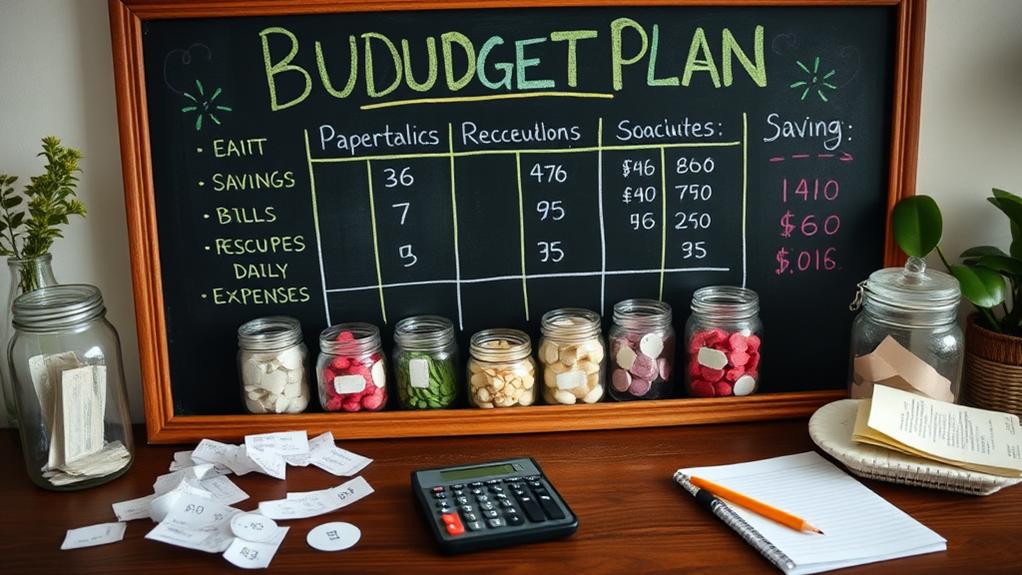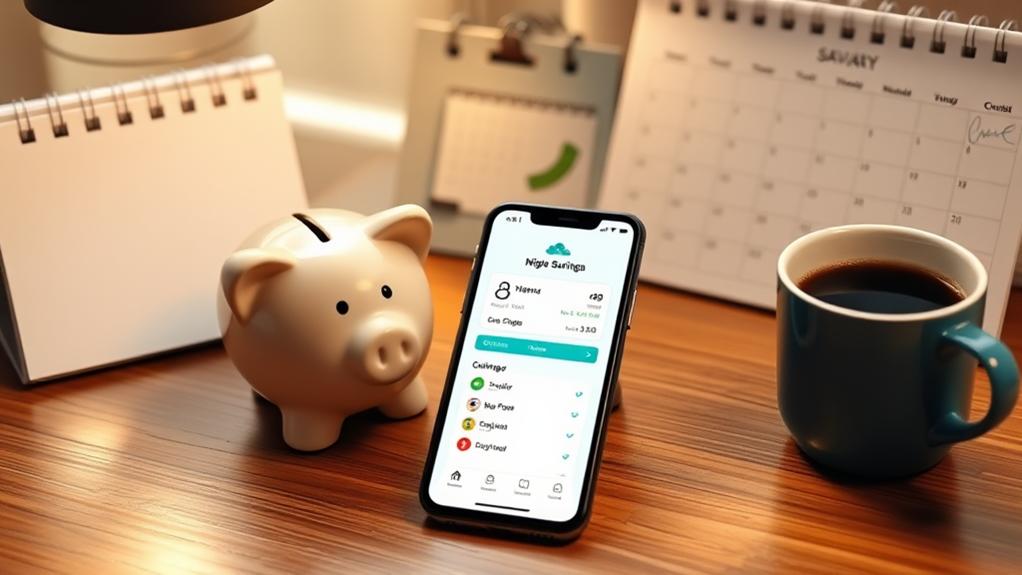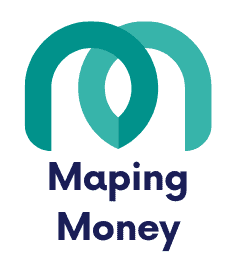7 Essential Saving Tips for Beginners to Jumpstart Your Financial Journey
To jumpstart your financial journey, begin by tracking your expenses to identify areas where you can save. Create a budget using the 50-30-20 rule, focusing on essentials, wants, and savings. Set specific, measurable savings goals, and automate your savings to make it easier. Cut unnecessary spending by evaluating subscriptions and cooking at home. Prioritize paying off debt quickly to avoid interest costs. Don't forget to review and adjust your plan regularly to stay on course. These tips will build a solid foundation for your finances, and you'll discover even more strategies that can enhance your savings journey ahead.
Key Takeaways
- Track your expenses meticulously to identify spending patterns and areas for potential savings.
- Create a budget using the 50-30-20 rule to allocate funds effectively for essentials, wants, and savings.
- Establish specific savings goals using the SMART criteria to maintain focus and motivation on your financial journey.
- Build an emergency fund with 3-6 months' worth of expenses to safeguard against unexpected financial setbacks.
- Cut unnecessary spending by evaluating subscriptions and opting for home-cooked meals to enhance savings potential.
Track Your Expenses

Tracking your expenses is a crucial step in mastering your finances. By documenting every dollar you spend each month, you can identify areas where you might be overspending and adjust your savings habits accordingly. Categorizing your expenses—like groceries, dining out, and utilities—offers clarity and reveals which categories consume the most of your budget.
Using apps or spreadsheets can simplify the process of tracking your expenses, providing valuable insights into your financial habits. This makes it easier for you to pinpoint where to cut costs or reallocate funds to maximize your savings. When you regularly review your spending habits, you hold yourself accountable and empower yourself to make informed decisions that benefit your financial future.
Studies show that individuals who actively track their expenses can save up to 15% more than those who don't monitor their spending. So, take that first step to save more money and set a strong foundation for your financial journey. Embracing this practice will not only enhance your awareness but also help you pave the way toward greater financial freedom.
Create a Budget

Creating a budget is essential for anyone looking to take control of their finances. It's your roadmap to financial freedom, allowing you to track your monthly income and expenses effectively. Start by utilizing the 50-30-20 rule: allocate 50% of your income to essentials, 30% to wants, and 20% to savings. This simple framework can help you create a budget that suits your lifestyle.
As you create a budget, be certain to set clear financial goals. Whether you're saving for an emergency fund or planning a vacation, these goals can motivate you and shape your spending habits. Utilize budgeting tools and apps to gain insights into your spending patterns, helping you identify potential savings.
Regularly review and adjust your budget to accommodate changes in income or unexpected expenses. This practice guarantees your financial plans remain relevant and achievable. By committing to track your finances diligently, you'll not only improve your savings accounts but also pave the way for a brighter financial future. Remember, a well-crafted budget empowers you to make informed decisions, ultimately leading to the freedom you desire.
Set Savings Goals

Once you've established a solid budget, the next step is to set savings goals that keep you motivated and focused. Start by identifying what you want to save money for—whether it's an emergency fund, a vacation, or a new car. Use the SMART criteria to create clear goals: make them Specific, Measurable, Achievable, Relevant, and Time-bound. For example, decide to save a specific amount, like $5,000 for a vacation within a year.
Aim to set aside money by saving at least 20% of your income, following the 50/30/20 rule. Break larger goals into smaller milestones to celebrate your progress, which keeps you engaged in your journey. Keep your savings account accessible and consider using Automatic Savings to guarantee you're consistently putting money aside without even thinking about it.
Regularly review and adjust your goals as your financial circumstances change. This helps you stay aligned with your overall financial strategy while keeping your aspirations in check. By setting clear savings goals, you not only enhance your motivation but also pave the way for achieving financial freedom.
Automate Your Savings

By automating your savings, you can take a significant step toward achieving your financial goals without the stress of manual transfers. Setting up direct deposits allows you to consistently save a portion of your income—many experts recommend targeting 20%. This way, you can prioritize your savings and resist the temptation to spend.
Utilize the automatic transfer features from your checking account to a high-yield savings account, which can earn you up to 4.55% interest. This maximizes your savings potential over time. Additionally, look for apps or banking services that round up your purchases to the nearest dollar, automatically saving the difference. It's a seamless way to build your savings while you spend.
Establish regular automatic transfers, whether weekly or monthly, to create a habit of saving. This method helps you manage fluctuations in discretionary spending, ensuring that saving becomes a natural part of your budgeting routine. Don't forget to regularly review and adjust your automated savings plan to align with any changes in your financial goals or income levels. By doing this, you'll support your journey towards financial freedom and a better credit score.
Cut Unnecessary Spending

Cutting unnecessary spending is a crucial step toward financial health. By taking a closer look at your budget, you can identify areas where you can easily spend less and keep more extra cash in your pocket. Start by evaluating your subscriptions; studies show that 84% of people underestimate their monthly spending in this area. You might discover unused services you can eliminate right away.
Here are some practical tips to cut unnecessary spending:
- Limit dining out: Prepare meals at home to save hundreds monthly.
- Switch to generic brands: You can save up to 30% on groceries without sacrificing quality.
- Implement a waiting period: This can help you avoid impulse purchases and prevent up to 50% of unplanned spending.
- Focus on high-value items: Spend only on things that truly enhance your life, boosting satisfaction and reducing overall purchases.
- Regularly review your budget: Identify low-value expenses and adjust your spending habits accordingly.
Pay Off Debt Quickly

Paying off debt quickly can greatly improve your financial situation and give you peace of mind. The first step in your journey to becoming debt-free is to prioritize high-interest debts. By focusing on these, you'll save money on interest over time, which helps you achieve your financial goals faster.
You can utilize the Avalanche method by making minimum payments on all your debts while directing any extra money aside towards the debt with the highest interest rate. This strategy maximizes your savings. Alternatively, if you need a boost of motivation, consider the Snowball method, which involves paying off the smallest debts first. This helps build momentum as you eliminate obligations.
Additionally, think about consolidating your debts with a fixed-rate loan. This can simplify your payments and potentially lower your overall interest rate, making it easier to stay on track. Finally, be sure to avoid accumulating new debt while you're in the process of paying off existing debts. This discipline is essential for maintaining progress and ensuring you reach your goal of being debt-free sooner rather than later.
Review and Adjust Regularly

Regular financial check-ins are essential for anyone looking to build a solid savings foundation. By committing to review and adjust regularly, you'll stay aligned with your budget and savings goals, ensuring you're on the right path toward financial freedom. Here's how to make the most of your financial reviews:
- Set a specific date each month for your check-in.
- Track changes in your income and expenses to spot trends.
- Use financial apps or spreadsheets to simplify your monitoring process.
- Reallocate funds as needed to maximize your savings potential.
- Celebrate small wins to stay motivated!
Regularly evaluating your financial plan fosters accountability and keeps you focused on your objectives. Studies show that individuals who take time to review their finances are more likely to achieve their savings targets and experience less financial stress. By actively engaging in this process, you can make informed decisions about your spending and adjust your approach as necessary. Embrace the habit of reviewing your budget and expenses; it's a powerful step toward financial empowerment!







